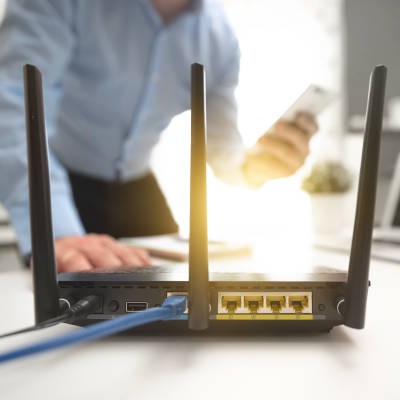i-medIT Blog
Looking back at the past few years, it’s little wonder that many people have become more concerned about their health—particularly when it comes to the workplace and spending extended amounts of time in the vicinity of other people. This makes it important that you do everything you can to make your workplace a healthier and safer-feeling place to work… but how?
Businesses are rarely successful without the ones steering the ship having the ability to make great decisions. Whether it’s managing your workforce, supporting your customers, or procuring the right equipment to best facilitate productivity, good decision making will be at the heart of any organization’s success. Let’s examine how you can make better decisions as they pertain to your technology solutions.
Cybersecurity is something that must be reinforced both in the office and out of the office for your remote employees, and it’s unfortunately quite difficult to maintain. Let’s take a look at the unique circumstances surrounding the remote worker and how you should reinforce security best practices for them, even if they are not physically present in the workplace.
Contrary to what many might assume, remote work is commonly associated with overwork—employees working longer hours and having difficulties disconnecting from professional life during their personal time. This can have some serious consequences if not offset in some way, so let’s discuss how this can be accomplished.
For all its benefits, remote work can introduce plenty of complications. These complications can easily make employees question a lot of things about their careers, including whether or not they should continue working for the same company they have been. This has been particularly the case amongst workers with children also in the home.
If you’re trying to share an idea in a presentation, adding a brief video clip can make it very simple to communicate with your audience. With this in mind, it is quite helpful that Microsoft PowerPoint makes it simple to embed a YouTube video directly into your presentation, whether you’re using PowerPoint 365 or PowerPoint 2016.
Employee monitoring—the practice of keeping an eye on your employees and their computer activity during work hours—isn’t exactly a new practice. However, with remote work suddenly seeing a huge boost in popularity, many businesses have sought to confirm that their workers are spending their work time as productively as possible. If you do choose to go this route, however, it is important to be aware of the lines that you cannot cross.
It hasn’t been too long since connectivity required an actual physical connection between the connecting endpoints, making a wired connection the de facto option for businesses. However, now that wireless connectivity is so widely available, businesses now have a choice… but which is the better option? Let’s compare some of the pros of each to make the answer a little clearer.
In the office, there are certain courtesies that most people follow, simply to make sure that the environment remains a peaceful and effective place to work. Working at home (as many have) makes many of these courtesies redundant. As many return to the office, resuming these manners will be important. Let’s go over some of the biggest shifts that your employees should remember as they head back to the office.
Technology impacts the business landscape more than it ever has, and its impact shows no sign of slowing. This is especially the case for the small business, which now has a much larger pool of competitors to deal with. As a result, it is more crucial than ever that small businesses take advantage of technology to assist them. Let’s go over a few tips that every small business should act upon.
A Bring Your Own Device (BYOD) policy is something that many organizations have adopted, for a few good reasons: employee satisfaction, cost savings, and productivity boosts included. However, it’s crucial that you don’t just assume that you can adopt a policy like BYOD without establishing some ground rules that your employees need to abide by.
IT inventory management, also known as IT asset management or ITAM, is an important process for any business to undergo. This is effectively the process of ensuring that all of your information technology resources are accounted for and protected. Here, we’ve assembled some practices that will help make this process much simpler.
Your employees are your greatest asset, which means that they need to be carefully managed and maintained, just like any of your other productivity-boosting assets. The difference is, your employees aren’t just another solution - they’re human beings, and as such, they aren’t tirelessly motivated. In fact, if your employees aren’t treated properly, they could… burn out.



















